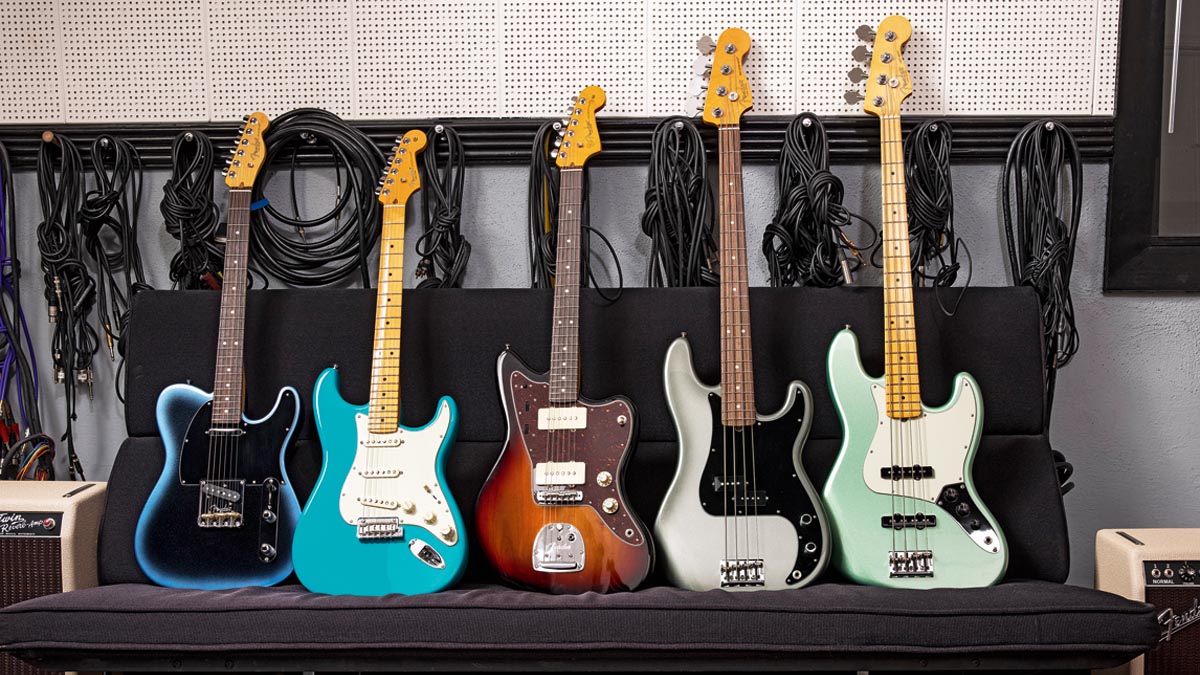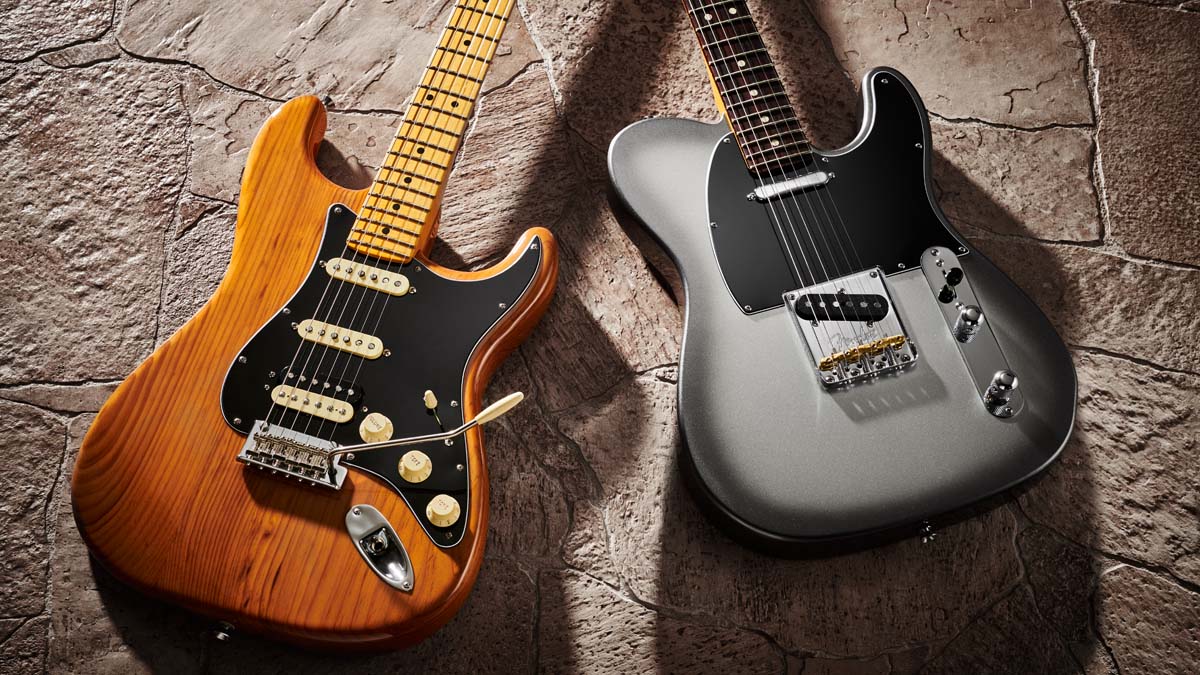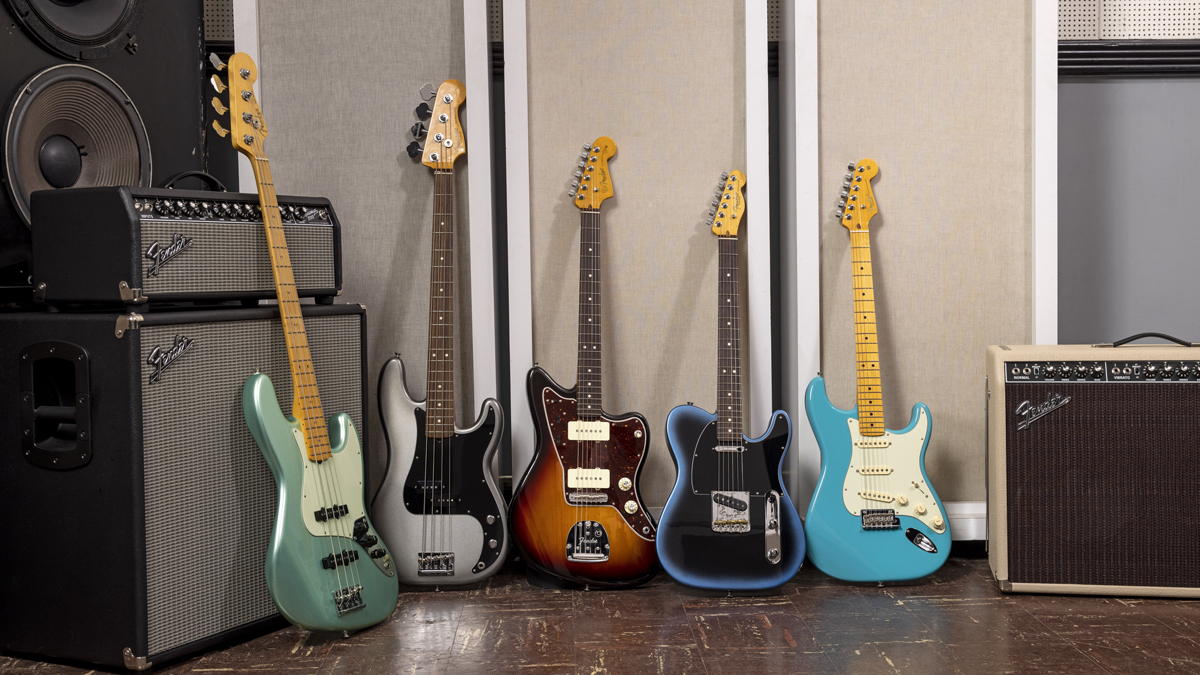How Fender reimagined its flagship guitar line with the American Professional II series
The story behind the evolution of the company's top-of-the-line US production models

Fender's American Professional II range has been in high demand since its debut in October 2020.
(Image credit: Fender)It’s easy to underestimate the importance of the American Professional series, not to mention its sales compared with the other USA Fender production lines.
“It’s the centre of gravity of the Fender line,” states Executive VP of Fender Product Justin Norvell emphatically. “It is the number one series. It is the number one requested and used instrument by artists; it’s our best-selling, most important series.
“We have instruments that are more contemporary, more state-of-the-art like the Ultra with their altered geometry and Noiseless pickups, and then the Original, which are vintage, like they used to be. But American Professional runs right in the middle – the best of yesterday and today. It’s definitely the sun and the Ultra and Original are two planets.”
While it really does feel like we’ve only just had the first American Professional series, Justin reminds us of the time scales. “It’s actually been about four years, which is about average for what we do,” he says. “On the side, R&D is always looking into things, specifications and features, and thinking about things we could do next.
“Then at some point it begins to coalesce where it feels like it’s enough and it’s a good time to do it. Of course, this was all in the plan before everything [the Covid-19 pandemic] happened. We felt like we had enough feedback from people, what people liked and some new developments, things like the DoubleTap humbuckers that we didn’t have on the original American Pros that we wanted to import, and the extra rolled fingerboard edges. We felt the time was right.

“It’s more akin to a running change, an evolution,” Justin continues. “It’s like the difference between a ’54 Strat and a ’57 – that’s three years, and in that time it went from ash to alder, from a U neck to a V neck, and by ’59 it had a rosewood fretboard. So it’s still that same spirit.”
Aside from the raft of new features we have a new body wood, too. “Yes, it’s Eastern White pine [Pinus strobus] that has also been torrefied, roasted, which helps with weight and stability,” confirms Justin. “We’re always playing with different woods. Every year it’s like, here’s red spruce, here’s western cedar… We’re always trying different woods. Moving away from ash isn’t 100 per cent our decision.
Get The Pick Newsletter
All the latest guitar news, interviews, lessons, reviews, deals and more, direct to your inbox!
“There’s a lot of stuff going on with the emerald borer beetle, the floods – our inability to get a steady supply of ash. It’s kind of a feast or famine thing at the moment, but it’s looking like in a couple of years, ash is just not going to be available. So something had to be done.
“We had about a dozen types of wood that we were playing with, but pine – its grain is not the same as ash but it’s kind of similar – has got a great tonality. It’s known, it has historic precedence in the Fender canon, and we’ve done pine things in the past that have been really well received. So when we were doing our testing that was a consideration.
“I mean, this is a really big series. It’s not a small limited edition, so it had to be something that was straight down the middle, if you will. Eastern white pine seemed to fit the bill and I think people have been really excited by it.
“But wood is different. Ash is more of a white-coloured wood, alder is a little pinker in hue and then there’s the darker colouration of this roasted pine – so, especially if it’s a translucent colour, you have to completely reformulate everything. There’s a lot of work that went into being able to use this pine, but we’re really pleased with the sonic recipe. It’s got a punchy, complex sound.”
Would you say it’s similar to ash in that regard? “I think it’s more of its own voice, but it’s in the neighbourhood. It’s a bit of a new paintbrush, if you know what I mean. It’s not really replacement ash: it can accomplish that from a visual and cosmetic standpoint, but from a tonal standpoint I think it’s adding a new flavour to the canon.”

Another very player-centric upgrade is the push-push switch, instead of a push-pull, on each of the guitars, which introduces some expanded sounds. Many companies steer clear of them due to reliability. What’s different with yours?
“A lot of people like a push-pull switch, but on a Stratocaster, with the shape of the knob, they are not easy to use,” Justin explains. “We’ve been trying to use a push-push switch for over two and a half years and we were running into some of the issues you mention, so we’ve been working with a supplier to create a bespoke switch that is rugged and reliable and lasts a really long time.
We’re always looking to make a better-sounding, easier-playing instrument
“So, again, it’s about getting the guitar out of the way. You don’t have to go in and put your fingernail under the knob: it’s about making the experience easier. But it wasn’t like, ‘Just look up a catalogue and we’ll have some of these push-push switches.’ This whole process was around two years of development, going back and forth to develop a push-push switch that we were happy with.”
“We’re always looking to make a better-sounding, easier-playing instrument. I really liken it to a recipe, because it’s not specific ingredients by themselves but it’s the way that they all come together, and whether they play well together and optimise each other so that one-plus-one equals three as a result of that unique combination of the things we do.”

Dave Burrluck is one of the world’s most experienced guitar journalists, who started writing back in the '80s for International Musician and Recording World, co-founded The Guitar Magazine and has been the Gear Reviews Editor of Guitarist magazine for the past two decades. Along the way, Dave has been the sole author of The PRS Guitar Book and The Player's Guide to Guitar Maintenance as well as contributing to numerous other books on the electric guitar. Dave is an active gigging and recording musician and still finds time to make, repair and mod guitars, not least for Guitarist’s The Mod Squad.











